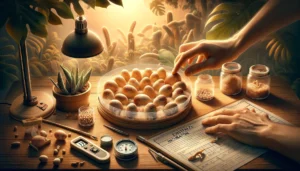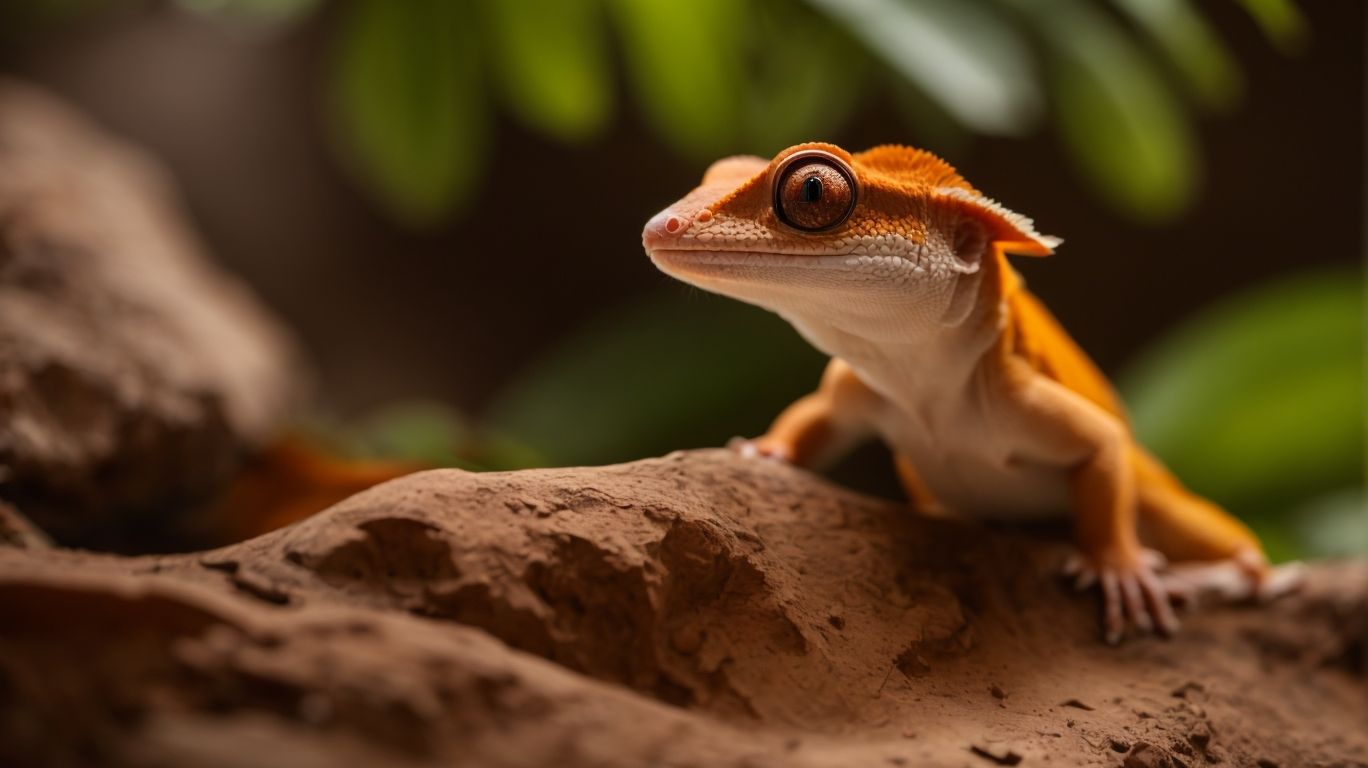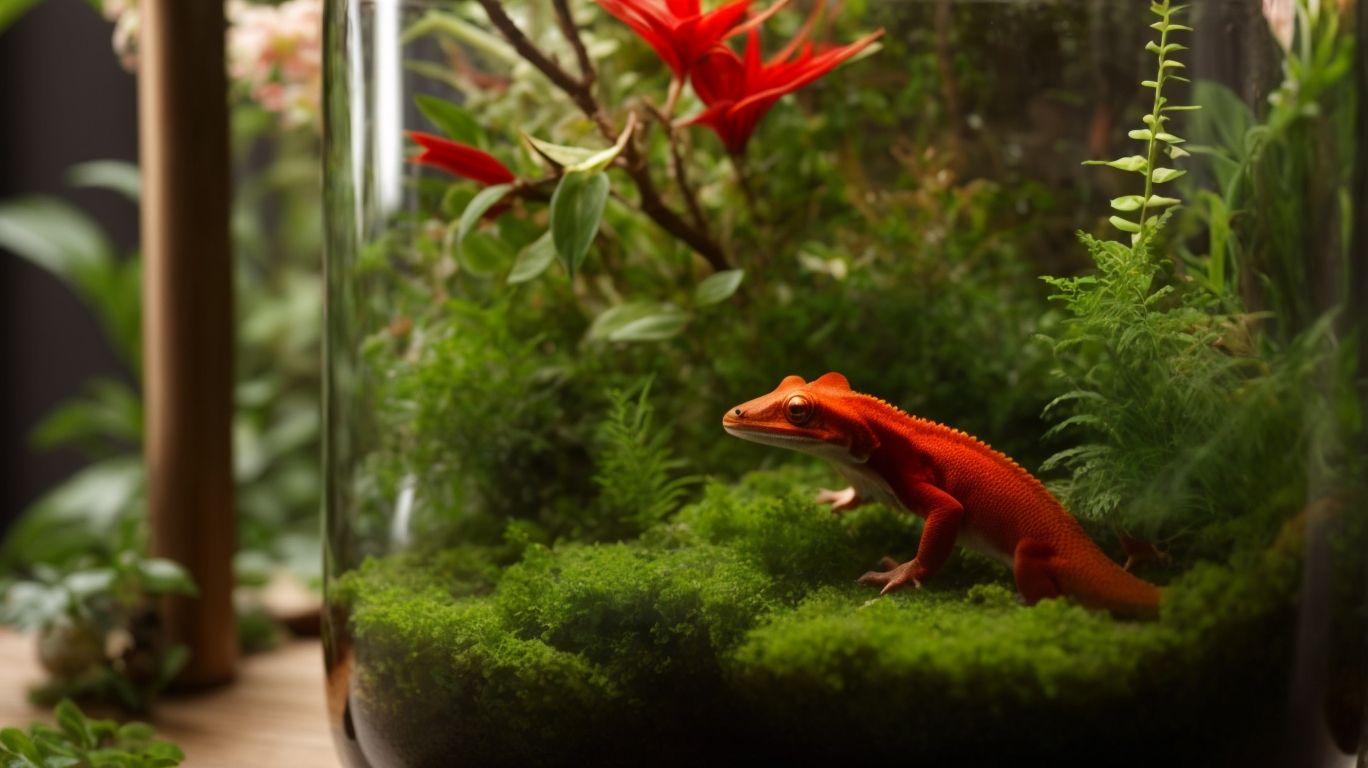
From Gene Pool to Pet Store: The Fascinating Genetic History of Ball Pythons
Table of Contents
Where It All Began: Natural Ball Python Morphs
Ball pythons have a fascinating genetic history that begins in the wild. In their natural habitat in Central and West Africa, ball pythons display a limited range of color and pattern variations. These wild ball pythons have what is known as the “wild type” morph, characterized by their brown or black base color with dark blotches. This natural variation in their appearance helps them blend into their environment, allowing them to hunt and evade predators more effectively.
The natural ball python morphs served as the foundation for the incredible diversity of morphs available in the pet trade today. Reptile enthusiasts and breeders recognized the potential for selectively breeding ball pythons to create new and unique color and pattern variations. This led to the advent of captive breeding, which opened up a whole new world of possibilities in terms of ball python genetics.
By carefully selecting and breeding individuals with desirable traits, breeders were able to produce offspring with specific morphs. This process allowed for the creation of a wide range of ball python morphs, including albino, pied, and clown, just to name a few.
The Advent of Captive Breeding: A Genetic Wonderland
The advent of captive breeding has opened up a whole new world of possibilities in the world of ball python genetics. Breeders and reptile enthusiasts recognized the potential for selectively breeding ball pythons to create new and unique color and pattern variations. This led to a genetic wonderland of mesmerizing ball python morphs.
Captive breeding allows breeders to carefully select and breed individuals with desirable traits, resulting in offspring with specific morphs. The process not only increases the diversity of ball python morphs but also plays a crucial role in educating the public about the genetic potential of these reptiles. It showcases the artistry and dedication of reptile enthusiasts who have turned a natural variation into a mesmerizing display of genetic wonders.
Delving Deeper: Dominant and Recessive Genes
Dominant and recessive genes play a crucial role in the genetics of ball pythons. Understanding how these genes interact and influence the traits of offspring is key to breeding and producing specific morphs.
Dominant genes are those that are expressed even if an individual only has one copy of the gene. This means that if a ball python inherits a dominant gene for a particular trait, such as a certain color or pattern, it will display that trait. On the other hand, recessive genes require an individual to inherit two copies of the gene in order for the trait to be expressed. If a ball python only has one copy of a recessive gene, it will be a carrier for that trait but not exhibit it physically.
The interaction between dominant and recessive genes can lead to interesting outcomes in breeding. For example, if two ball pythons with dominant traits are bred, their offspring will all display those dominant traits. However, if a ball python with a dominant trait is bred with a ball python carrying a recessive trait, only some of the offspring will display the recessive trait. This is because the dominant gene masks the expression of the recessive gene.
Understanding the dominance and recessiveness of certain genes allows breeders to predict the traits of future offspring and selectively breed for specific morphs. By carefully pairing individuals with desired traits, breeders can manipulate the genetic makeup of ball pythons to create even more diverse and unique morphs.
The Art of Predicting Morphs: Punnett Squares
The art of predicting morphs in ball pythons is a fascinating and essential aspect of breeding these incredible creatures. One tool that has revolutionized the world of genetics and breeding is the Punnett square. Punnett squares provide a visual representation of how genes are passed down from parent to offspring and can help breeders determine the potential outcomes of a breeding pair.
Using Punnett squares, breeders can easily predict the probability of certain traits appearing in the offspring. By understanding the inheritance patterns of dominant, recessive, and co-dominant genes, breeders can strategically pair ball pythons to produce specific morphs.
The Punnett square consists of a grid that shows all possible combinations of alleles that the offspring can inherit from each parent. Each square in the grid represents one possible genotype, or genetic makeup, of the offspring. By analyzing the Punnett square, breeders can determine the likelihood of different traits being expressed in the offspring.
For example, if two ball pythons with recessive traits are bred together, the Punnett square will show that all the offspring will inherit two copies of the recessive gene, resulting in offspring that display the recessive trait. On the other hand, if two ball pythons with co-dominant genes are bred, the Punnett square will reveal a variety of possible combinations, resulting in offspring with a mix of both traits.
Color and Pattern Variations of Ball Pythons
Color and pattern variations in ball pythons are truly mesmerizing. The world of ball python genetics has unlocked a kaleidoscope of colors and patterns that captivate reptile enthusiasts. From vibrant oranges and yellows to intricate striping and speckling, the range of possibilities seems endless.
These variations are a result of different combinations of genes and alleles. Genes that control color and pattern are responsible for the incredible diversity seen in ball python morphs. For example, genes like the “Piebald” gene can produce snakes with large areas of white and patches of normal coloration. Other genes, such as the “Spider” gene, create a distinct pattern of thin lines and wavy movements.
Each morph is unique, and breeders have been able to create stunning combinations by selectively breeding individuals with specific color and pattern traits. The result is an array of morphs like the “Bumblebee,” with its vibrant yellow and black stripes, or the “Banana,” with its pale yellow skin and vibrant orange patterns.
These color and pattern variations add to the allure and beauty of ball pythons. Whether it’s the striking contrast of colors or the intricate details of the patterns, each morph has its own distinct charm. It’s no wonder that enthusiasts are constantly in awe of the seemingly endless combinations that can be created.
Unearthing New Morphs: The Never-Ending Exploration
The world of ball python genetics is an ongoing adventure, with breeders and enthusiasts constantly uncovering new morphs and combinations. It is what keeps reptile enthusiasts on the edge of their seats, eagerly anticipating what new wonders will be discovered.
With each new breeding, breeders have the opportunity to unveil a unique combination of genes and alleles, resulting in morphs that have never been seen before. It is a journey filled with surprises and excitement, as the possibilities seem to be limitless.
The never-ending exploration of ball python genetics also encourages collaboration and knowledge-sharing within the reptile community. Breeders and enthusiasts exchange ideas and discoveries, constantly pushing the boundaries of what is known and delving deeper into the genetic intricacies of these incredible creatures.
As new morphs are unearthed, the world of ball python genetics continues to captivate the hearts and imaginations of enthusiasts. The thrill of discovering a new combination or pattern is unmatched, and it serves as a reminder of the infinite beauty and complexity of genetics.
The Future of Ball Python Genetics: Endless Possibilities
As we delve deeper into the captivating world of ball python genetics, one thing becomes clear: the future is full of endless possibilities. The ongoing exploration of ball python genetics by breeders and enthusiasts has already resulted in an incredible array of morphs, but there is still so much more to uncover. With each new breeding, there is the potential for discovering new combinations of genes and alleles, resulting in morphs that have never been seen before.
The thrill of unveiling a new morph is unmatched, and it fuels the passion and excitement within the reptile community. Breeders and enthusiasts are constantly exchanging ideas and discoveries, pushing the boundaries of what is known and delving deeper into the genetic intricacies of ball pythons.
As technology and our understanding of genetics continue to advance, we can only imagine what the future holds. New tools and techniques may revolutionize the field, allowing for even more precise breeding and the creation of morphs that were once unimaginable.
The journey is far from over, and with each new breeding and discovery, the world of ball python genetics expands, offering even more opportunities to marvel at the beauty and complexity of these incredible creatures.
Related Posts

Incubating Crested Gecko Eggs: Essential Techniques and Tips
Crested geckos are fascinating reptiles that are known for their…

Red Crested Gecko Health: Common Issues and Preventive Care
Are you a proud owner of a red crested gecko?…

Creating the Ideal Environment for Your Red Crested Gecko
Do you own a red crested gecko or are you…

No Comments